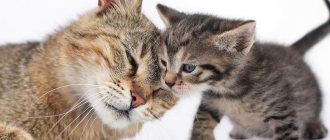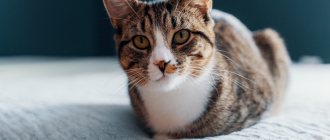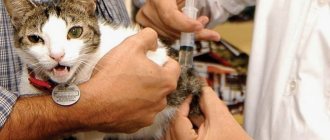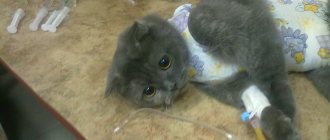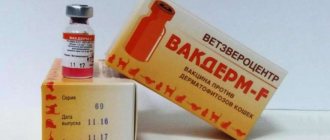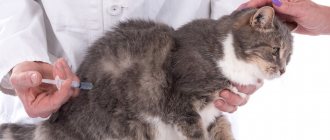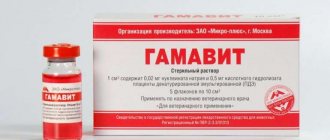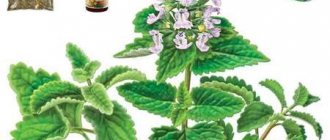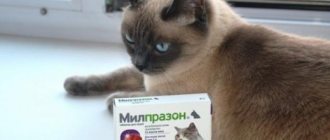Summer has come - a time for active recreation, summer cottages and vegetable gardens. A time of abrasions and wounds, and therefore a high demand for antiseptics. More than 250 trade names of antiseptics in the form of ointments, solutions, sprays and powders are registered in Russia. Let's figure out which drugs are classified as antiseptics in medicine, how they differ from each other, and which of them can be recommended for every home medicine cabinet.
First of all, we note that the pharmacist independently selects the product only for external use, and the choice of antiseptic for the mucous membranes of the nasopharynx, gastrointestinal tract, respiratory and urinary tract, as well as for the genital organs remains with the doctor. We also remind you that many antiseptics cannot be applied to injured skin. Here are two main points to consider when selling and talking to a client. The mechanism of action of antiseptics may be different, depending on the main active ingredient.
Classification of antiseptics
Halides (halogens and halogen-containing compounds) Chlorine or iodine compounds (antiformin, iodoform, iodinol, Lugol's solution, chloramine B, chlorhexidine).
The bactericidal effect is based on the fact that upon contact with organic substrates, these products release active halogens - chlorine and iodine, which destroy the proteins of microorganisms. Due to their high bactericidal activity, they are widely used both in medical institutions and at home. Oxidizing agents (hydrogen peroxide, potassium permanganate, hydroperite). In contact with tissues, they release active oxygen, which creates unfavorable conditions for the development of anaerobic and putrefactive microbes. They are used to a limited extent due to their moderate bactericidal activity and short shelf life. Acids (salicylic, boric). A shift in pH to the acidic side leads to denaturation of the protoplasmic protein of the bacterial cell. Salicylic acid has a weak antiseptic effect, and boric acid has a large number of side effects associated with toxicity. Currently, antiseptics for treating skin are practically not used as antiseptics. Alkalies (ammonia, sodium tetraborate). Currently, drugs are practically not used as antiseptics due to their low antiseptic activity. Aldehydes (formalin, lysoform). Penetrating inside the microbial cell, they come into contact with the amino groups of proteins, which leads to cell death. The same effect explains the strong irritant effect on human mucous membranes and skin. Currently, they are used more for disinfecting surfaces in medical institutions. Alcohols (ethyl). They dehydrate tissues and irreversibly coagulate the proteins of microorganisms. They are used quite widely and have a pronounced antiseptic effect. In 2006, the WHO declared alcohol-based hand sanitizers to be the gold standard for hand sanitizers. Cationic antiseptics (benzyldimethyl-myristoylamino-propylammonium). The active substance acts on the membranes of microorganisms, leading to their death. It has a very wide spectrum of antimicrobial action, stimulates the immune system, and accelerates the healing process of wounds. Widely used in surgery, obstetrics, gynecology, traumatology, burn therapy, otorhinolaryngology and other fields of medicine. Salts of heavy metals (preparations of mercury, silver, copper, zinc, lead). The antimicrobial effect is associated with blocking the sulfhydryl groups of microbial enzymes. Use is limited due to toxicity. Dyes (methylene blue, brilliant green, fucorcin). They are active against gram-positive bacteria and cocci. Methylene blue has a very weak antiseptic effect and is practically not used. Herbal antibacterial drugs (urzaline, calendula tincture, imanin and others). Weak antiseptic properties. Rarely used. All these substances have different degrees of activity, antimicrobial spectrum and toxicity. To understand how to choose the right antiseptic, you need to be guided by all these characteristics in accordance with the intended purpose: primary wound treatment, treatment of festering wounds, or treatment of damaged mucous membranes or intact skin/mucous membranes. When choosing which antiseptic to treat a particular wound, you must also follow the instructions in order to avoid side effects, as well as determine the dosage required in a particular case. Let's take a closer look at the most popular antiseptics.
Processing rules
As a rule, a cat receives a wound on the street while defending its territory or during the period of sexual heat. The resulting wounds can be of a different nature.
Weeping wound
Weeping wounds are treated dry, provided that the pet does not remove the bandage. If there is purulent exudate, you can apply a gauze pad soaked in a hypertonic solution of table salt or Vishnevsky ointment to the wound. But such treatment will be successful only if tissue regeneration is going well.
Deep
If the wound surface is deep enough, then treat it with a solution of Chlorhexidine or Miramistin, carefully inserting the nozzle of the bottle into the wound. Next, you need to inject Levomekol ointment into the cavity using a syringe without a needle. Procedures must be performed 2-3 times a day until complete healing. You should also put on a special collar for your pet so that he does not further injure the wound surface by licking it.
Open
The first step is to treat the surface with hydrogen peroxide. If the wound surface is large and without purulent discharge, then you can treat it with Novocaine solution for pain relief, just by pouring a little on it. Then you can sprinkle streptocide powder on it, it disinfects the surface and promotes speedy healing.
Bleeding
The first step is to stop the bleeding. To do this, clamp the surface with your hands or bandage it tightly. You can also apply a tourniquet above the injury and attach a note indicating the time of application. The tourniquet should not be on the wound for more than 2 hours. For shallow wounds, treat with hydrogen peroxide.
After emergency measures are taken, the animal should be taken to the clinic for treatment.
With purulent discharge
Hydrogen peroxide or chlorhexidine are suitable for disinfection. To prevent the spread of infection, you can give an injection of an antibiotic, for example, Sinusol 50 mg. The full course of treatment is 7 days.
If there is pain, heat, swelling and hyperemia in the wound area, you should immediately contact a veterinary clinic. This may indicate the development of an abscess, which requires professional treatment.
Superficial
Initially, you should wash the wound with hydrogen peroxide. Then treat with Baneocin or Neosporin. It is recommended to apply ointments up to 3 times a day. If possible, try not to cover the wound surface with a bandage. With air access it will heal faster.
Treatment of burns depends directly on their severity. Initially, you need to apply a cold compress to the damaged surface for 20 minutes. Then treat it with a weak solution of potassium permanganate or anti-burn ointment. Then apply a sterile gauze bandage to the surface.
If meat is visible
Initially, you should treat it with 3% hydrogen peroxide. Afterwards, you can apply brilliant green around the wound surface, and sprinkle the wound itself with Baneocin or treat it with Sanotol spray. After this, you should apply a sterile gauze pad and immediately contact a veterinary clinic.
Hydrogen peroxide
Only a 3% solution is used to treat wounds (a higher concentration can cause a chemical burn). It is also used as a hemostatic agent. Hydrogen peroxide is an excellent remedy for primary wound treatment (washing), as it has great cleaning ability - dirt particles and damaged cells are mechanically removed with the resulting foam. You can treat wounds both on the surface of the skin and on the mucous membranes. Hydrogen peroxide is generally not used on healing wounds, as it prolongs the period of complete healing. It is also not used for deep wounds and is not injected into body cavities. When stored in light, it loses its active properties. Open packaging is stored for about a month, closed - 2 years.
What to do?
Minor scratches do not require human intervention. Cat saliva contains lysozyme, which prevents the development of opportunistic microbes. If the cat received a minor injury during a fight, it is calmed down, caressed, the hair at the site of the injury is trimmed, and the defect is treated with an antiseptic.
If the paws are injured, apply a bandage to protect against infection, so that it does not put pressure on the sore spot, so that the cat cannot rip it off. Until the wound heals, the animal should not be allowed outside. If the defect is located on the face or ears and the cat scratches it, put on an Elizabethan collar.
The fight against the consequences of lacerations involves preliminary suturing by a qualified veterinarian. Otherwise, healing will take a long time, and an ugly scar will remain at the site of the defect, on which hair will not grow. If the wound has festered, the cat is taken to the clinic, and further treatment is carried out under the supervision of a veterinarian.
https://youtube.com/watch?v=ZnqbzVJc-6w
A recovering pet needs to be provided with adequate nutrition, as well as strengthen the body’s defenses using immunocorrectors - Gamavit, etc.
Iodine/povidone-iodine
Used in an alcohol solution (the so-called “tincture of iodine”) or in Lugol’s solution. Only the edges of the wound are treated with iodine so as not to cause soft tissue burns. The great advantage of iodine is its wide spectrum of antimicrobial activity: it kills all major pathogens and, with prolonged exposure, even spores - the most resistant forms of microorganisms. The use of large amounts of iodine is contraindicated in cases of hypersensitivity to it, hyperfunction of the thyroid gland, thyroid formations, dermatitis, and kidney diseases. Application to mucous membranes is not advisable, especially in children.
Processing sequence and rules
Before treating the wound, you should inspect the injury site for the presence of foreign bodies. If there are any foreign objects in the wound, you should not remove them yourself, as this can lead to severe bleeding, wound infection, and even sepsis.
The algorithm for using brilliant green for wounds is as follows:
- If there is bleeding, it should be stopped by applying a pressure bandage. Next, treat the surface with peroxide, avoiding it getting into the open wound. After this, anoint the wound treated with peroxide with brilliant green, but only the edges of the wound should be treated. Next you need to make a dry bandage from a sterile bandage. You can treat the wound with brilliant green for the second time only after a day.
- You should not apply brilliant green in several layers, since all alcohol solutions can cause burns. In pharmacies you can find brilliant green in one percent and two percent solutions; if the wound occurs in a child, you should take the first version of the solution for treatment.
- Light wounds, for which there is no risk of infection, are best treated with iodine, and brilliant green is used for wounds with a high probability of purulent inflammation. Postoperative sutures should be lubricated with brilliant green only as prescribed by the treating doctor.
- Pharmacies sell bactericidal patches impregnated with a small concentration of this antiseptic. These patches are great for treating broken calluses, as well as minor cuts.
- The brilliant green solution can be used to treat purulent rashes, boils, and stomatitis. After a person has anointed the abscess with brilliant green, it should not be covered with a bandage, allowing it to dry.
- When treating wounds, you should be very careful; you should not allow the solution to get into your eyes, as this may lead to loss of vision. If the antiseptic gets into your eyes, you need to rinse them with plenty of running water and see an ophthalmologist.
If you follow all the rules during processing, then the risk of getting a burn, allergic reaction or other side effect is practically reduced to zero.
Chlorhexidine bigluconate
Belongs to the group of halogens. Typically used in concentrations of 0.5–4.0%. At lower concentrations, the bactericidal activity of chlorhexidine decreases, therefore, as an antiseptic in this case, it is used only in an alcohol solution. Chlorhexidine has bacteriostatic, fungicidal, antiviral properties. However, 1% chlorhexidine against fungi and mycobacteria tuberculosis has a weaker effect compared to povidone-iodine. The drug can be used for the initial treatment of injured skin areas, as well as to accelerate the healing of purulent wounds and for the treatment of damaged mucous membranes. In most cases it is well tolerated. There are no age restrictions for use - a good antiseptic option for children. It is not recommended to use together with iodine preparations (often skin irritation).
Zelenka for treating wounds in cats
As a rule, pet owners resort to using such products in emergency cases when it is not possible to seek help from a veterinarian. And almost every first aid kit has everything you need - at least one bottle of the popular antiseptic - iodine or brilliant green, as well as materials for dressing. This is quite enough to treat a wounded pet.
Preparatory and manipulation activities. Preparation for processing and the procedure itself proceed according to a certain algorithm:
- You should not rely only on your own strength, since even the owner is not always able to cope with a frightened cat alone. You should call an assistant.
- It is important to take care of protective equipment: clothing and gloves that will protect the body from bites, scratches and corrosive green spots.
- Before the event, it is advisable to wash your hands with soap and wipe with a disinfectant or alcohol solution.
- The pet should be properly secured, holding it in such a way that it cannot escape.
- The animal should be examined and the condition of the injuries received and their location assessed.
- If necessary, the hair around the damage should be cut off with scissors. Before use, they should also be wiped with vodka, alcohol or another disinfectant.
- Sometimes foreign objects get stuck in wounds: splinters, pieces of glass or others. They are carefully removed using disinfected tweezers.
- If there is bleeding, you must first begin to stop it. If this is not done, the blood will be washed away by the antiseptic.
- The wound should be blotted with a sterile swab soaked in hydrogen peroxide. And then remove the remaining drug along with dirt with a clean napkin.
- It is recommended to apply a small amount of brilliant green to a disk or cotton swab and carefully treat the wound. In case of severe, deep damage, you should limit yourself to treating only the edges of the damaged area.
- After 1 minute, when the green layer has dried a little, you can apply a bandage by placing a sterile napkin under the bandages. It will protect the damage from scratching and licking.
Important details. It is not recommended to cut tissue along the edges of the wound, as this may cause it to become infected. It is better to entrust such manipulations to a veterinarian.
Your pet may require repeated treatments. The procedure can be completed in 10-12 hours.
Benzyldimethylmyristoylaminopropylammonium
It is used as a solution for washing wounds or as an ointment for application to purulent wounds. It is active against viruses, bacteria, fungi, and protozoa, but has virtually no effect on human cell membranes, unlike chlorhexidine. It has an antiseptic, immunostimulating and wound-healing effect. The immunostimulating effect is associated with the ability of the drug to increase the activity of phagocytes and macrophages. The positive effect on wound healing is explained by the fact that the active substance absorbs pus and fluid released during inflammation of wounds. At the same time, the product does not irritate healthy tissues and does not interfere with the growth of new tissues. The main indication for use is the prevention of suppuration and treatment of purulent wounds. Can be applied to mucous membranes. Can be used to treat wounds for children over 3 years of age.
Zelenka for lichen
This very unpleasant infectious disease most often affects cats that are accustomed to free-range or even live on the street. Ringworm can be detected by the following symptoms:
- a rash appears;
- the cat becomes nervous, irritated, itches often and for a long time;
- the affected areas become bald and take on a rounded shape;
- the skin peels off and becomes covered with dermal scales.
This disease requires diagnosis and comprehensive treatment. One of the external medications prescribed by veterinarians for lichen is brilliant green. But this remedy cannot alone cope with the disease.
Brilliant green solution
Everyone's favorite "green". Available in the form of alcohol solutions and pencils. It has a moderate antiseptic effect and is effective against gram-positive bacteria. Only the edges of the wounds are treated with the solution, without going into damaged tissue. Has a drying effect. It is used until the period when fresh granulation tissue begins to appear in the wound, since long-term use prevents adequate healing of the wound edges. Can be used as a children's antiseptic.
What is included in the composition of brilliant green, its properties and disadvantages
Zelenka is one of the most common antiseptics. Every person is familiar with it from the first years of their life. The drug is also actively used to treat domestic animals. Often the owner, without hesitation, begins to treat the cat with brilliant green in case of wounds or the appearance of pronounced skin changes. Most animals negatively perceive such human efforts and carefully lick the medicine from the skin and fur. Are such actions dangerous? It is necessary to consider what composition the product has.
The official name of the medicine is very beautiful - Diamond Green. It belongs to the medicinal group of disinfectants and antiseptics. The product is an alcohol solution of the named aniline dye Diamond Green, it is obtained synthetically.
The main properties of brilliant green:
- disinfection and sterilization of the damaged area;
- drying wet wounds.
The second of the listed advantages of antiseptics can be considered as a disadvantage. Zelenka in cats can cause excessive drying of the skin, which leads to the formation of a pronounced crust on the surface of the damage, which can slow down the healing process of the wound.
Fukortsin
Coloring antiseptic. A combination of fuchsin, boric acid, phenol, acetone, resorcinol and ethanol. Indications for the use of fucorcin are fungal and pustular skin diseases, abrasions, cracks, etc. Apply to the edges of wounds. Has less drying effect than brilliant green and iodine. It is used much less frequently in wound treatment. It is undesirable to use in children due to the boric acid and phenol contained in it, which have a large number of side effects. When applied to the skin, boric acid easily penetrates the blood (especially in children) and enters the internal organs and tissues, accumulating there. Therefore, long-term use can cause intoxication. This property forced us to sharply limit the use of boric acid, especially in childhood. Phenol also has the ability to easily penetrate the skin and lead to intoxication of internal organs.
Octenidine (octenidine dihydrochloride)
A cationic surfactant with antimicrobial activity against gram-positive and gram-negative bacteria, viruses, as well as against yeast-like fungi and dermatophytes (fungi that feed on keratin and cause dermatomycosis). Similar in action to quaternary ammonium compounds (QAC). The damaged surface is completely processed. Can be used on mucous membranes. The antiseptic has no age restrictions and is used for children. Currently, it is the drug of choice in Europe as an antiseptic due to its wide spectrum of action and maximum speed of achieving effect.
Table 1. Comparative characteristics of the main antiseptic agents
| Antiseptic | For leather processing | For treating wounds | For mucous membranes | Applicability for children |
| Ethanol | + | _ | _ | — |
| Hydrogen peroxide | + | + | + | + |
| Iodine | + | _ | — / + | — / + |
| Chlorhexidine | + | + | + | + |
| Potassium permanganate | + | _ | _ | + |
| Diamond green | + | _ | _ | + |
| Fukortsin | + | _ | _ | _ |
| Benzyldimethylmyristoylaminopropylammonium | + | + | + | + |
| Octenidine | + | + | + | + |
The simplest ways to treat cat lichen
It turns out that to combat these ailments you do not need to go to the pharmacy and buy expensive medications. Perhaps the supplies you need for therapy will be at your fingertips at home.
- Herbs have long been used to treat numerous ailments in humans and animals. Therefore, celandine juice is widely used for treatment. To do this, you need to pick the grass and rub it into the damaged areas. The procedure is repeated 3-4 times a day.
- To wipe affected areas, infusions made from tansy, wormwood, celandine, and lilac herbs are widely used. To do this, crushed herbs are poured into a glass of boiling water and infused for up to 6 hours.
- Plant substances such as cranberry, garlic, burdock root, celery, and pepper are popular and effective in treating the disease. The products in crushed form are rubbed onto the cat after the juice has formed.
So, we looked at what lichen in cats is and treatment at home. You can read reviews on this topic or write your opinion on the forum about treatment with folk remedies.
Please help me with advice on how to cure lichen in a cat? For now I am applying iodine and clotrimazole to the sores on the advice of the veterinarian. But he lost his appetite and started vomiting.
Woman.ru experts
Find out the opinion of an expert on your topic
Khairullina Rosa Rinatovna
Psychologist. Specialist from the site b17.ru
Tropina Natalya Vladimirovna
Psychotherapist. Specialist from the site b17.ru
Egorova Anastasia Vladislavovna
Psychologist. Specialist from the site b17.ru
Semikolennykh Nadezhda Vladimirovna
Psychologist. Specialist from the site b17.ru
Spiridonova Nadezhda Viktorovna
Psychologist. Specialist from the site b17.ru
Zubkova Anna Andreevna
Psychologist, Gestalt therapist. Specialist from the site b17.ru
Konnova Ekaterina Alekseevna
Psychologist, Crisis counseling. Specialist from the site b17.ru
Novostrueva Irina Vladimirovna
Psychologist, Emotional-imaginative therapist. Specialist from the site b17.ru
Nevzorova Sofya Igorevna
Psychologist. Specialist from the site b17.ru
In every first aid kit
So, what products can a pharmacy worker recommend to a buyer for a home first aid kit? First of all, these are benzyldimethyl-myristoylamino-propylammonium and octenidine, as the most universal and safe agents. These drugs are the drugs of choice and should be recommended first. Chlorhexidine is also quite versatile, which is used on intact tissues and for treating wounds, including mucous membranes. As for solutions of brilliant green and iodine, it is necessary to inform the buyer that these antiseptics are only suitable for treating wound edges and should not be used on mucous membranes. Thus, among the entire list of antiseptics presented on the pharmaceutical market, a fairly small number of drugs have universal application possibilities.
Sources
- Kharkevich D. A. Pharmacology. M. Geotar Medicine. 2010.
- Blatun L. A. Miramistin in a comprehensive program to combat hospital infections in a surgical hospital // Miramistin: application in surgery, traumatology and combustiology: collection of works / ed. Yu. S. Krivosheina. M., 2006.
- Carolin Fromm-Dornieden, Gorovtsov A. V., Nadine Schӓfer, Ewa K. Stuermer. Comparison of the rate of growth suppression of E. COLI, STAPHYLOCOCCUSAUREUS and PSEUDOMONASAERUGINOSA by modern antiseptics for the purpose of their use for infected wounds // Fundamental Research. — 2013. — No. 10–2.
Using brilliant green to rid a cat of ringworm
Cats that are often outdoors can acquire an unpleasant disease of infectious origin - lichen. To treat such a “scourge,” brilliant green is traditionally used.
What is lichen? These are characteristic skin lesions that first develop as a rash, barely noticeable under the fur. The cat becomes irritated and itches a lot. Then changes occur - the hair disappears from the affected areas, areas with baldness appear, they have a rounded shape. The affected area begins to peel off and skin scales form on it.
If your pet has the listed signs, additional examination and high-quality treatment under the supervision of a veterinarian is necessary. One of the treatments prescribed for cats is brilliant green.
Depending on the type of lichen, it is provoked by a special fungus or one of the varieties of the herpes virus. Herpesvirus also affects humans, for example, it causes chickenpox, which people traditionally also treat with Diamond Greens.
Zelenka is used to treat feline ringworm for several reasons.;
- the product is capable of disinfecting the affected area, which due to severe itching the animals scratch vigorously;
- foci of lichen treated with brilliant green are painted in a bright color, such a noticeable “marking” makes it possible to clearly take into account all areas susceptible to infection and control the appearance of new ones;
- the product has the ability to influence the causative agent of the disease, which affects the upper layers of the skin without affecting the healthy lower layers.
Smearing a cat with brilliant green without using other comprehensive treatment to get rid of lichen is ineffective. The main purpose of the drug in the fight against the disease is to prevent its complications by inflammatory or purulent processes. It is important to remember that you can use an antiseptic after a reliable diagnosis of the disease. If you apply brilliant green before a medical examination, this procedure will significantly complicate the determination of the classification of lichen; additional samples will be taken from the cat, which will delay the start of treatment.
